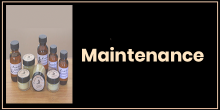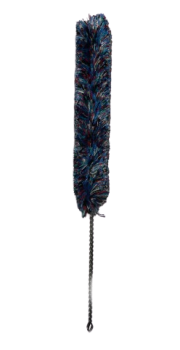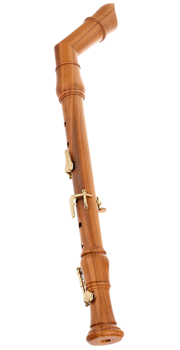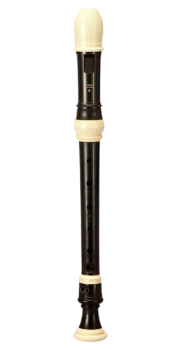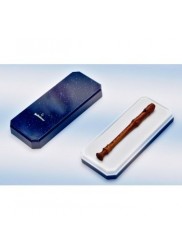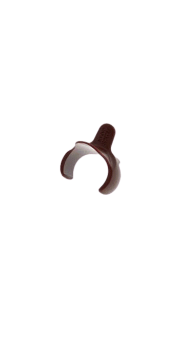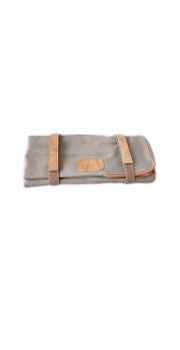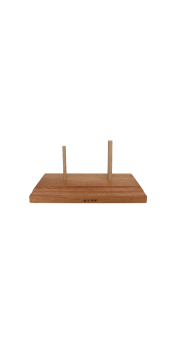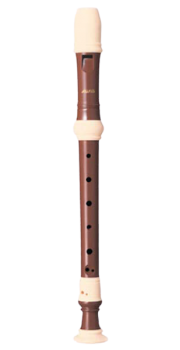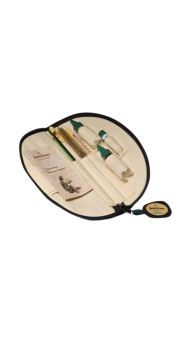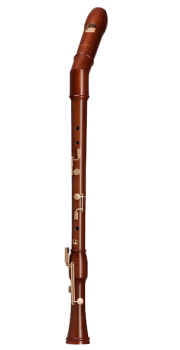No products
Prices are tax included
Browse our large range of recorders and recorder accessories, we are sure to have what you are looking for.
You will find everything you need here, including:
- A wide range of recorder sizes
- A selection of the best recorder makers
- Recorder maintenance supplies
- Recorder accessories, including cases, straps, stands and thumbrests
- Recorde...
Browse our large range of recorders and recorder accessories, we are sure to have what you are looking for.
You will find everything you need here, including:
- A wide range of recorder sizes
- A selection of the best recorder makers
- Recorder maintenance supplies
- Recorder accessories, including cases, straps, stands and thumbrests
- Recorder fashion accessories
And much, much more!
Full range of recorder sizes
We have a huge range of recorders, ensuring everyone is well catered for. Our range covers:
- Garklein and sopranino recorders
- Descant or soprano recorders
- Treble or Alto Recorders
- Tenor, knick tenor and comfort tenor recorders.
- Bass recorders including basset, greatbass, contrabass, subgreatbass and even massive subcontrabass recorders.
Recorders for every budget
We stock a selection of carefully chosen recorder makers, ensuring everyone from the beginner to the professional is well catered for. Recorder makes that we stock include:
- Mollenhauer
- Kung
- Dolmetsch
- Aulos
- Zen-on
- Kunath Peatzold
A large range of wooden recorders
Recorders are made using a variety of wood types, each with a unique effect on the tonal qualities of the instrument. The Orpheus Music range includes:
- Pearwood recorders
- Maple recorders
- Plum recorders
- Palisander recorders
- Rosewood recorders
- Olivewood recorders
- Grenadilla recorders
- Satinwood recorders
- Cherrywood recorders
- Resin, plastic and hybrid recorders are also available.
Concert pitch and baroque recorders
Modern recorders are most commonly pitched at concert pitch (A=440 Hz), like modern pianos and orchestral instruments.
However, among serious amateurs and professionals, other pitch standards are commonly found. For the performance of baroque music, A=415 Hz is the de facto standard, while pre-Baroque music is often performed at A=440 Hz or A=466 Hz. These pitch standards are intended to reflect the broad variation in pitch standards throughout the history of the recorder. In various regions, contexts, and time periods, pitch standards have varied from A=~392 Hz to A=~520 Hz. The pitches A=415 Hz and A=466 Hz, a semitone lower and a semitone higher than A=440 Hz respectively, were chosen because they may be used with harpsichords or chamber organs which transpose up or down a semitone from A=440. These pitch standards allow recorder players to collaborate with other instrumentalists at a pitch other than A=440 Hz. We have a special category dedicated to A=415 Hz recorders, click here to browse.
Subcategories
Orpheus Music stocks new Mollenhauer Recorders from Germany, Takeyama Recorders from Japan, Music Garden by Kulossa from Taiwan, Kung Recorders from Switzerland & Aulos, Yamaha and Zen-on Recorders from Japan.
Recorders are made in different sizes with names and compasses roughly corresponding to different vocal ranges. The sizes most commonly in use today are the soprano ("descant", lowest note C5), alto "treble", lowest note F4), tenor (lowest note C4) and bass (lowest note F3). Recorders are traditionally constructed from wood and ivory, and now come in a wide range of different woods. Recorders are also made in plastic and you can buy beginner as well as high quality plastic recorders. The recorders' internal and external proportions vary, but the bore is generally reverse conical (i.e. tapering towards the foot) to cylindrical, and all recorder fingering systems make extensive use of cross fingering.
Today, recorder sizes are named after the different vocal ranges. This is not, however, a reflection of sounding pitch, and serves primarily to denote the pitch relationships between the different instruments. Groups of recorders played together are referred to as "consorts." Recorders are also often referred to by their lowest sounding note: "recorder in F" refers to a recorder with lowest note F, in any octave.
The recorder is used as an ensemble or consort instrument and comes in a variety of different woods including, pear, maple, plum, palisander, rosewood, olivewood, grenadilla, satinwood and cherrywood.
Orpheus Music is a Recorder specialist shop. A large range of quality recorders from Mollenhauer, Kung, Dolmetsch, Aulos, Zen-on and Kunath Peatzold. Garklein recorders, descant recorders, soprano recorders, treble recorders, alto recorders, tenor, bass recorders, and great bass recorders. Many different models including Kung studio, Kung Superio, Kung Marsayas, Mollenhauer Canta, Mollenhauer Denner range, Mollenhauer dream. Also a large range of recorder accessories including cases, thumbrests, straps, stands, oils, cork grease, cleaning rods and brushes.
The recorder is first documented in Europe in the Middle Ages, and continued to enjoy wide popularity in the renaissance and baroque periods, but was little used in the classical and romantic periods. It was revived in the 20th century as part of the historically informed performance movement, and became a popular amateur and educational instrument. Composers who have written for the recorder include Monteverdi, Lully, Purcell, Handel, Vivaldi, Telemann, Johann Sebastian Bach, Paul Hindemith, Benjamin Britten, Leonard Bernstein, Luciano Berio, and Arvo Pärt. Today, there are many professional recorder players who demonstrate the instrument's full solo range and a large community of amateurs.
The sound of the recorder is often described as clear and sweet, and has historically been associated with birds and shepherds. It is notable for its quick response and its corresponding ability to produce a wide variety of articulations. This ability, coupled with its open finger holes, allow it to produce a wide variety of tone colors and special effects. Acoustically, its tone is relatively pure and odd harmonics predominate in its sound.
All the things you need to look after your recorder. Recorder brushes, cleaning rods, maintenance kits, oils, and cork grease.
Recorder specialist shop with a large range of accessories for your recorder.
Playing in and maintaining your recorder
A new wooden recorder has to be played in. Give your instrument time to get accustomed to the moisture and warmth that comes through playing. You can use this time to explore and become familiar with the unique characteristics of your recorder.
Play it daily in the first three to four weeks – but not for periods longer than 20 minutes. Look for slow passages to play. Explore and savour every individual note: what makes each note sound best? Experiment with various dynamic levels. Find the limits of your instrument, but don’t tax it too much in the high registers.
Older wooden recorders that have gone without being played for a while must be played in again.
Wooden recorders with plastic head joints are ready to be played immediately and don’t need to be played in.
Wood is a living, breathing material: for this reason the recorder maker crafts the windway to be a bit wider than necessary when new. Thus, while it is being played in, the block may swell slightly. However, the block sometimes swells more than expected, which may cause problems with the response or result in a “hoarse” sound. If this is the case with your instrument, we can easily solve the problem with a simple correction in our Recorder Clinic.
Warm up your instrument before playing it, especially during the colder seasons of the year. You might try warming it up under your arm or by placing it in your pocket. In this way, you will avoid a build-up of condensation and possible problems with “hoarseness” or a slow response when playing.
Dry each part of the recorder carefully after playing. Use a cleaning rod with a cotton (lint-free) cleaning cloth. Do not forget to blow out the condensation that has collected inside the instrument. Hold the palm of your hand against the open end of the head joint, place your mouth over the labium and blow strongly – the moisture will escape at the top of the windway. Be careful: many players place their fingers on the labium while blowing through the windway. The labium edge is very easily damaged, so ensure your fingernails never come into contact with the labium!
After playing, keep your recorder out of its case to let it dry.
Do not keep it assembled during this time, as this could result in warping or even the formation of cracks at the tenons.
Mould tends to grow in recorders that have not been given sufficient time to dry!Protect your recorder from extreme changes of temperature as this leads to cracking from the stresses placed on the wood.
Avoid storing your recorder in hot places such as in cars or on windowsills, which could cause the paraffin wax used for impregnation to melt.Clean the surface of your recorder with a damp cloth. Using a drop of washing up liquid will allow you to remove unsightly marks even more easily, especially around the beak. The windway can be carefully cleaned with the help of a bird feather. MOLLENHAUER Recorders made of plastic can be washed in the dishwasher.
The tenons of your wooden recorder need maintenance to keep them responsive and easy to move. You can use the joint grease that comes with every instrument for this purpose.Be sure to apply it sparingly, removing excess grease to avoid it getting into the edges of the finger holes. If the joints are stiff and difficult to twist, try rotating them in one direction only. That will make it easier!Recorders with keys require special attention: when assembling or dismantling your recorder, always grasp the body either above or below the keys to avoid bending the key mechanisms. If g your recorder a key no longer works lightly and soundlessly any more, it might just need a drop of oil applied between the hinges. . Do not use recorder oil, which is only meant for wood maintenance!
Anticondens (ord. no. MOL-6138) is effective in preventing “hoarseness” caused by condensation which blocks the windway. A combination of organic washing up liquid and water, it releases the surface tension of the little water droplets within the windway, leading to a flat film of moisture. Dribble just a few drops of Anticondens into the windway from the side of the labium and let it run down over the block surface to the windway entrance. Then blow the Anticondens out of the recorder as described above.
Our maintenance kit (order no. MOL-6132) has everything you need for the care of your wooden recorder, including extensive instructions.
All the things you need to look after your recorder. Recorder thumb rests, recorder straps for bass and tenor recorders and a range of soft and hard cases for your recorder whether it be a case to hold all your recorders or a single case. Recorder stands to hold your recorders when playing.
A range of wooden recorder earrings, broaches, and tie pins. Beautifully crafted in your favourite recorder wood. A perfect present for yourself or a recorder obsessed friend!
Reference: MOL-6153
Brand: Mollenhauer
Wool Mop for Tenor Recorder
Cleaning Wool Mop for Tenor Recorder
$9.90In StockReference: K1593
Brand: Kung
Sinor Knick Comfort Tenor in Cherrywood
Made from selected Cherrywood
Baroque fingering, double keys C/C#, extra keys G and F
Bent ("knick") headjoint for extra access and comfort
Kung's signature rich and warm sound, perfect for ensemble work
$1,660.00In StockReference: Z150BN
Brand: Zen-on
Stanesby Descant
- Based on fine historic instruments, designed by Friedrich von Huene and Kodo Uesugi.
- Especially noted for its accurate intonation and impeccable voicing.
- A marvelous instrument for recreating the music of the 18th century.
- English fingering, made in 3 sections.
- ABS resin, with joint lubricant and cleaning rod.Â
$37.50Out of stockReference: AU-TT-3D
Brand: Aulos
Adjustable thumb rest for Tenor in Dark Brown.
Tenor Thumb Rest
$5.25In StockReference: K9930
Brand: Kung
Roll bag 670 x 380mm (9 parts for Descant to Tenor)
This roll bag is made of cotton and leather. It has nine parts and holds different recorders from Soprano to Tenor. Its size is 670 x 380 mm then open.
$155.95In StockReference: AU703B
Brand: Aulos
Haka Descant Recorder
- This high-quality soprano recorder has been created on the basis of the refined design of the great craftsman Richard Haka, who was responsible for creating a new age of recorder-making in the 17th century.
- Curved windway.
- Accurate intonation and rich, expressive ability are characteristic of this unique instrument.
- Reddish-brown colour.
$36.95In StockReference: AUBP6
Brand: Aulos
Bass Recorder Strap
Aulos Bass Recorder Strap. Fully adjustable to suit individual needs
$21.00Out of stockReference: MOL-6132
Brand: Mollenhauer
Recorder Maintenance Kit, 8 parts
A convenient pouch containing everything needed to look after your recorder. The kit includes 8 items.
$45.00In StockReference: MOL-2546KD
Brand: Mollenhauer
Canta Knick Bass Recorder in Stained Pearwood
- Dark Stained Pearwood Bass, baroque double hole, with double key
- Strong, stable sound: the foundation of the ensemble!
- Natural holding position: the knick (bent head) brings the instrument closer to your body; you have a significantly smaller distance to get to the lower notes.
$2,818.00In Stock



